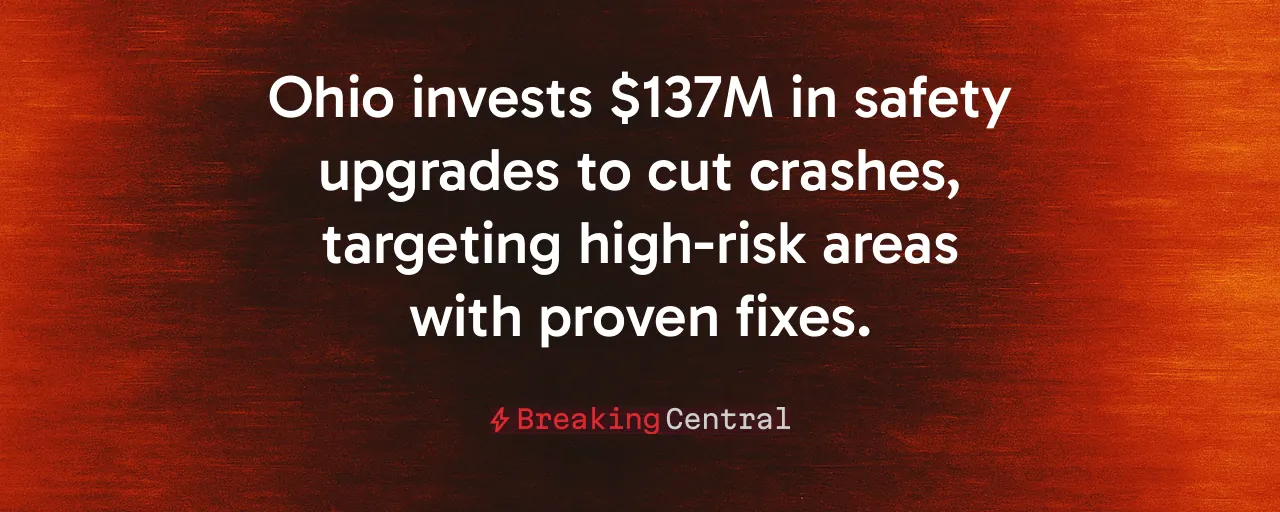A New Wave of Road Safety Funding
Ohio Governor Mike DeWine and Transportation Director Pamela Boratyn unveiled a $137.5 million plan on July 2, 2025, to fund 55 traffic safety projects across 41 counties. The initiative, part of the state's Highway Safety Improvement Program, aims to curb fatal crashes and protect pedestrians. It's a bold move, backed by data showing a decline in traffic deaths since 2021. But as the state pours millions into infrastructure, questions arise about priorities and long-term costs.
The program targets high-risk areas with proven fixes like roundabouts, wider shoulders, and upgraded crosswalks. Supporters, including state officials and safety advocates, argue these changes save lives and boost local economies through construction jobs. Taxpayers and business owners wonder if the funds are being spent wisely or if the state is chasing goals that stray from core transportation needs.
Road safety matters to every Ohioan, whether they're driving to work or walking to school. The question is whether this approach delivers the most value for the state's finite resources, even as safety remains a priority. The stakes are high: last year, 125 pedestrians died in crashes, and roadway departure incidents accounted for half of all traffic fatalities.
Data-Driven Fixes That Work
The Highway Safety Improvement Program focuses on engineering solutions with a track record of success. Roundabouts, for example, cut fatal and serious-injury crashes by up to 80 percent while reducing maintenance costs compared to traffic signals. Widening shoulders on rural roads, another priority, lowers crash rates by 20 to 35 percent, especially for roadway departure incidents that dominate Ohio's fatality statistics.
These projects aren't chosen at random. State officials use crash severity data, equity factors, and benefit-cost ratios to pinpoint high-risk corridors. Since 2021, this approach has coincided with a 6 percent drop in fatal crashes, a trend Director Boratyn credits to targeted investments. For rural motorists on narrow, curvy roads, wider shoulders can mean the difference between a close call and a tragedy.
Business groups, including freight companies, back these upgrades. Safer roads reduce delays, lower insurance costs, and keep goods moving efficiently. Construction contractors and labor unions also benefit, as projects create jobs and stimulate local economies. The numbers suggest Ohio's strategy is working, but not everyone is convinced the benefits outweigh the costs.
Taxpayer Concerns Take Center Stage
While safety improvements sound appealing, many Ohioans question the program's scope and priorities. The $137.5 million comes from a mix of federal funds, state gas taxes, and general revenue, resources that could address other pressing needs like pothole repairs or rural bridge maintenance. Critics, including county officials and taxpayer advocates, worry about mission creep, where funds meant for core infrastructure are diverted to urban pedestrian projects or aesthetic enhancements.
Rural communities, in particular, feel shortchanged. Many of the 2025 projects focus on urban areas with high pedestrian traffic, leaving secondary roads in less populated counties underfunded. These roads, often narrow and poorly lit, are where roadway departure crashes are most common. Local leaders argue that freight corridors and rural highways, vital to Ohio's economy, deserve equal attention.
There's also unease about future costs. The 2019 gas tax hike, which added 10.5 cents per gallon, already strained drivers' wallets. Taxpayer groups fear that expanding safety programs could lead to more tax increases or borrowing, especially if federal funding dries up. For a state priding itself on fiscal discipline, these concerns carry weight.
Learning From the Past
Ohio's focus on road safety isn't new. Since 2005, the state has used Strategic Highway Safety Plans to guide investments. A 2013 audit exposed delays in project approvals, prompting reforms that sped up funding. The 2019 gas tax increase further boosted safety budgets, enabling systemic upgrades like roundabouts and shoulder widening. These efforts paid off, with fatalities declining after a 2020 spike tied to pandemic-era driving patterns.
Historical data supports Ohio's current strategy. Studies show that targeting high-risk sites with proven fixes yields the biggest safety gains. Roundabouts and wider shoulders are effective, offering long-term savings by reducing crashes and emergency response costs. This evidence aligns with a practical approach that values results over rhetoric.
Balancing Safety and Fiscal Sense
Ohio's safety program reflects a commitment to protecting lives, balancing ambition with accountability. Prioritizing high-risk corridors and freight routes ensures that funds support both safety and economic growth. Public-private partnerships could stretch dollars further, shifting some risks to private firms while maintaining user-fee funding like gas taxes.
Stricter penalties for impaired or distracted driving could complement infrastructure upgrades, addressing human factors that engineering can't fix. By focusing on rural roads and freight mobility, the state can serve communities often overlooked in favor of urban centers. Transparency in project selection, with clear performance metrics, would reassure taxpayers that their money is well spent.
The decline in traffic deaths since 2021 shows progress, but challenges remain. Pedestrian fatalities, while down from last year's 125, are still too high at 50 in 2025 so far. Ohio needs to stay disciplined, avoiding projects that prioritize optics over impact. A lean, targeted approach will keep roads safe without burdening drivers or businesses.
A Road Worth Traveling
Ohio's $137.5 million safety push is a step toward fewer crashes and safer communities. Its data-driven focus on roundabouts, wider shoulders, and crosswalks delivers measurable results, from fewer fatalities to smoother freight routes. The program's success hinges on staying true to core priorities: protecting lives, supporting commerce, and respecting taxpayers.
By learning from past successes and addressing rural needs, Ohio can build on its progress without overreaching. Business owners, drivers, and local leaders want roads that are safe, reliable, and fiscally responsible. The state has the tools to deliver, keeping costs in check and projects on track.
Every Ohioan deserves to travel without fear, whether they're behind the wheel or crossing the street. With careful planning and a focus on what works, Ohio's roads can be a model of safety and efficiency. The journey continues, and the path ahead looks promising if the state stays the course.
